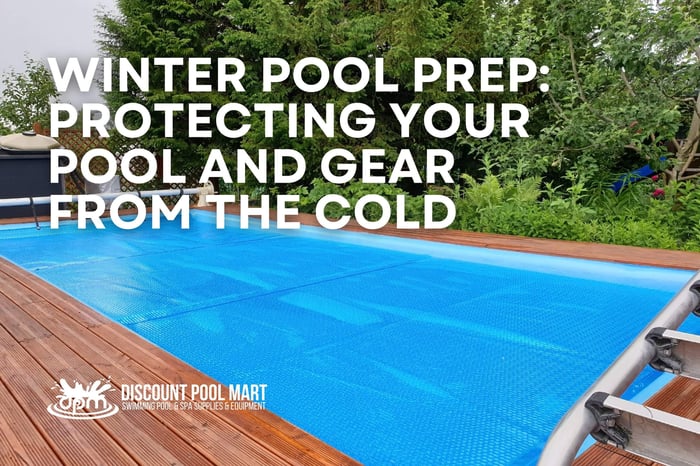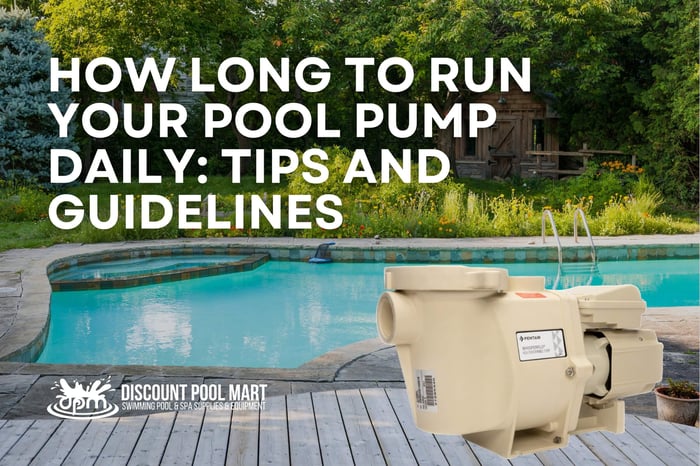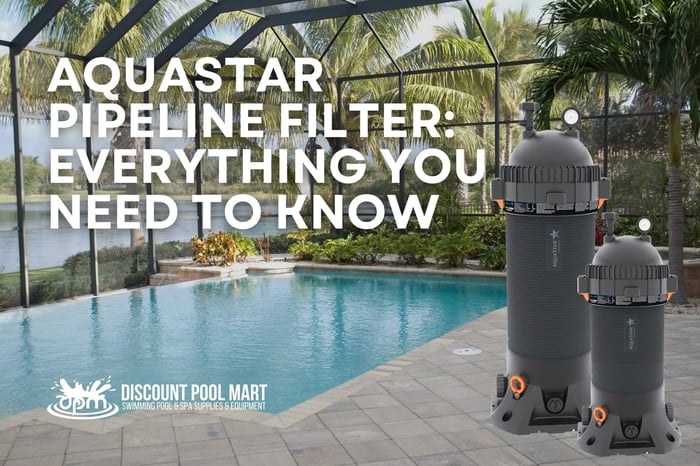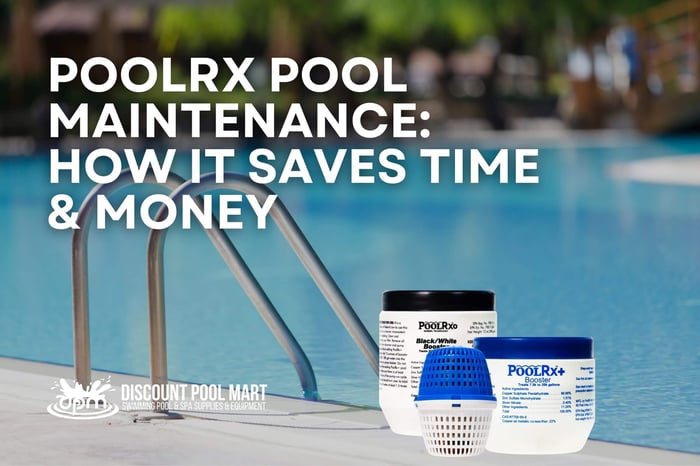Winterize Your Pool: Prep Tips to Protect Gear and Water
As colder weather approaches, it’s important to winterize your pool to avoid costly damage and keep things clean for spring. Skipping winter prep can lead to cracked equipment, algae growth, and added chemical costs next season. Whether you're closing your pool completely or just reducing use, taking the right steps now will save time, money, and frustration later.
Why You Should Winterize Your Pool
Leaving your pool untreated or improperly closed during the off-season can cause major issues:
Freezing temperatures can crack pump housings, filters, and pipes.
Unbalanced water can stain plaster or tile, and promote algae growth.
Covering a dirty or chemically imbalanced pool traps problems beneath the surface.
By taking the time to winterize your pool properly, you’re preventing damage and making spring reopening easier and cheaper.
Key Areas to Inspect Before Winter
Filter Parts That May Need Replacing
Check your filter system for worn o-rings, cracked drain plugs, or damaged lids. Even small leaks or degraded parts can cause problems during winter shutdowns or freezes.
View our Filter Parts Collection to see what may need updating before the cold sets in.
Pump Seals and Housing
If you’re shutting off the pump for winter, inspect the motor shaft seal and pump lid. These parts often dry out or crack when unused.
Explore our Pump Parts Collection for replacements before sealing things up.
Use the Replacement Parts Search Tool
Not sure what part needs replacing? Use our Replacement Parts Search Tool on the homepage. Enter your pump or filter’s brand and model number to see a full equipment diagram with labeled part numbers, making it easy to find exactly what you need before winter hits.
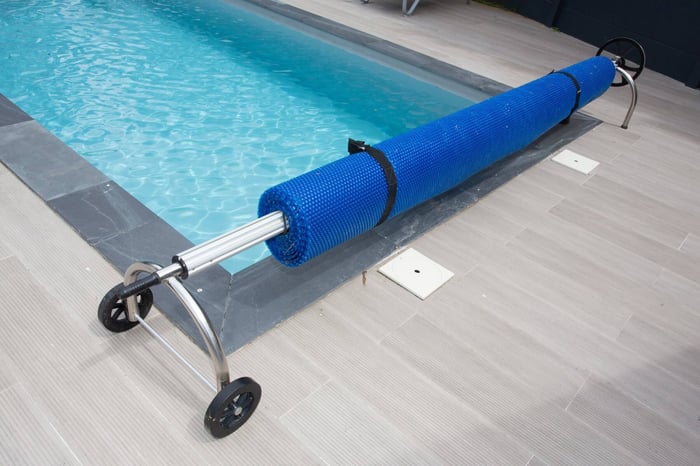
Balance and Clean Your Water Before Closing
Properly balanced water protects pool surfaces and equipment all winter long. Start by testing and correcting:
pH (7.2–7.6)
Total alkalinity (80–120 ppm)
Calcium hardness (200–400 ppm)
Chlorine or sanitizer levels
Shock the pool, brush the walls, and vacuum the floor thoroughly. Then, add a closing algaecide or clarifier to maintain clarity through the off-season.
Visit our Chemicals Collection to grab everything you need for final water prep.
Need help with dosages? Try our Pool Volume Calculator and Chemistry Calculator to get exact recommendations based on your pool size.
Add a Solar Blanket or Spa Cover
Heat loss and debris buildup are two of the biggest winter challenges. If you plan to leave your pool partially open or use a spa during the winter months, consider one of these options:
Midwest Solar Blankets
These insulated covers reduce evaporation, retain heat, and protect the water surface during cold months. They’re ideal for fall and early spring shoulder seasons.
MidWest Extra Heavy-Duty Blue Solar Pool Cover Blanket | Rectangle

$39.99
The MidWest Rectangular Blue Solar Pool Cover Blanket is an essential accessory for pool owners aiming to enhance energy efficiency and maintain comfortable swimming temperatures. Crafted from durable resin material with a thickness of 12 mil, this cover features thousands… read more
Custom Spa Covers
If you have a spa, a custom-made, insulated cover helps retain warmth, protect jets, and lower heating costs. These are especially useful if your spa stays active during winter.
Custom Spa and Hot Tub Cover | Made to Order

$0.00
Our custom spa and hot tub covers are made to order with 28oz marine-grade vinyl, designed with mildew inhibitors and UV-stabilized coloring to resist fading. The double-sided solid cover liner is chemically treated on both sides to prevent damage from… read more
Protect Pool Plumbing from Freezing
For regions where freezing is a concern, pay special attention to your pool plumbing. After lowering the water level, blow out and plug all return lines, skimmers, and dedicated cleaner lines. This prevents standing water from expanding and cracking underground PVC lines. Use winterizing plugs or gizmos to seal lines and safeguard against ice damage.
If you're unsure which plugs or accessories fit your equipment, our Replacement Parts Search Tool can help you locate the correct pieces for your setup.
Shut Down or Adjust Pool Automation
If your pool uses an automation system to manage pumps, valves, and heating, now is the time to adjust or power it down. Most systems have a “winter” or “off-season” setting that conserves energy but keeps minimal circulation going to prevent stagnation or freezing.
Leaving the system running at reduced capacity can also help maintain water chemistry and prevent freeze damage in milder climates. Just be sure to inspect sensors, freeze protection features, and valve actuators before cold weather arrives.
Keep an Eye on the Pool All Winter
Just because your pool is closed doesn’t mean you can forget about it until spring. Plan to check the cover, water level, and surrounding area at least once a month.
Here are a few easy tasks to include in your winter pool check-ins:
Make sure the cover is secure and not sagging
Remove any heavy snow, leaves, or puddles that may accumulate
Check water level to ensure it hasn’t risen too high or dropped too low
Look for signs of leaks or equipment shifting due to soil expansion
Doing a quick walkthrough every few weeks can help you catch and fix small problems before they become expensive spring surprises.
Final Thoughts: Prep Now to Save Time and Money Later
When you winterize your pool correctly, you’re protecting more than just water—you’re extending the life of your equipment and making the next season easier. With a few hours of preparation, some smart inspections, and the right chemicals and parts, you’ll avoid the most common cold-weather headaches.
Don’t forget to check out our Filter Parts Collection, Pump Parts Collection, and Chemicals Collection for everything you need.
And if you’re not sure which part fits your system, use our Replacement Parts Search Tool for fast, diagram-based guidance.
Smart winter prep isn’t just about avoiding damage—it’s about starting the next season strong.

